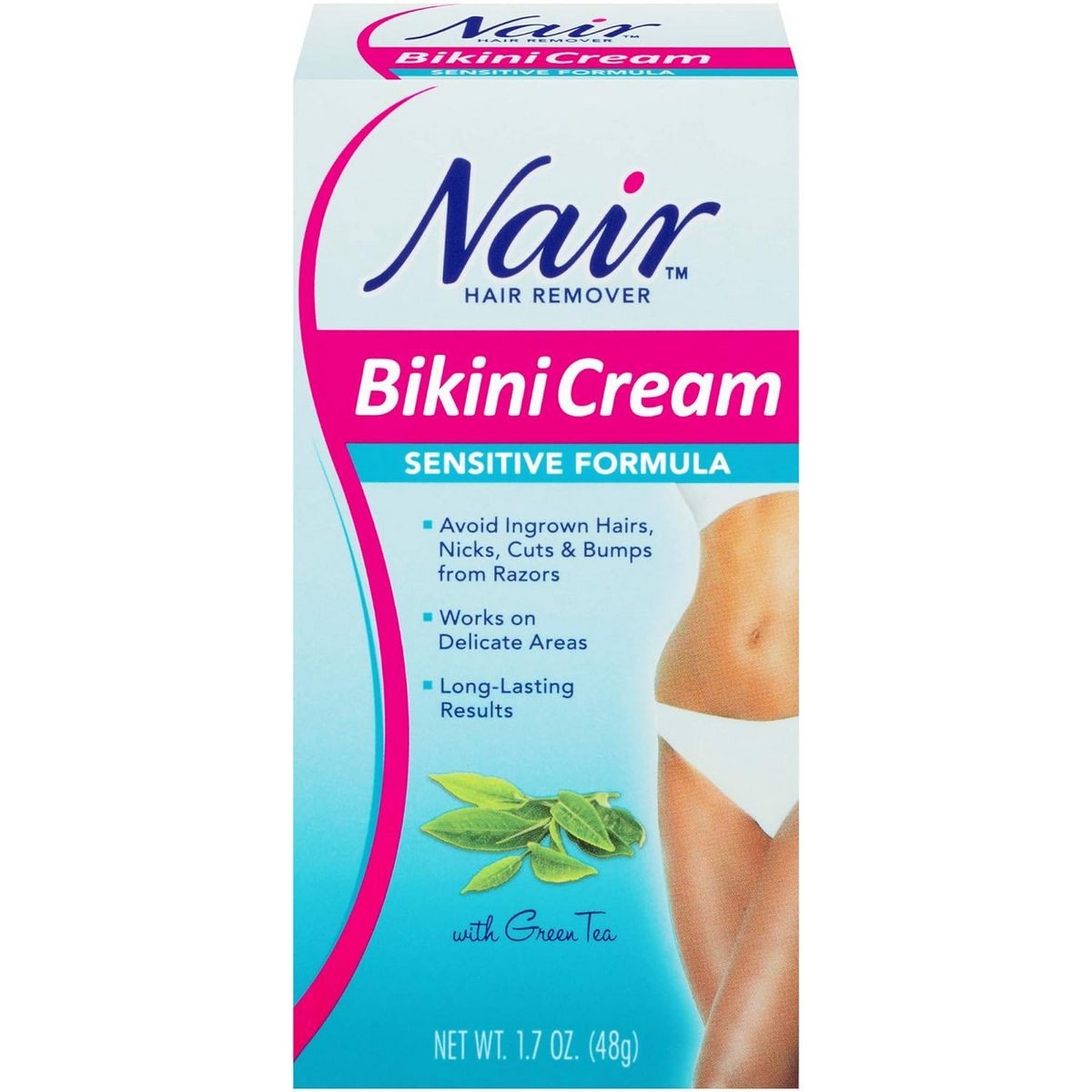
Contents
- 1 Can You Use Nair on Your Private Area? Pubic Hair Removal
- 1.0.1 What is Nair? How does it work?
- 1.0.2 What are the four main disadvantages of using Nair?
- 1.0.3 Is it safe to epilate pubic hair?
- 1.0.4 How safe are other methods of pubic hair removal?
- 1.0.5 How to safely remove pubic hair at home: 8 Tips
- 1.0.6 Subscribe to MedicineNet’s Skin Care & Conditions Newsletter
Can You Use Nair on Your Private Area? Pubic Hair Removal
Nair is a brand of hair-removal cream. Hair-removal creams or depilatories are chemicals that remove unwanted hair on the face and body.
Nair can be used in your private area. However, there are some things to remember before using Nair to remove your pubic hair:
- Avoid using the cream if you have any cuts or abrasions.
- Trim your hair before applying the cream. Thick and long hair can be difficult to remove, and keeping the cream for a long time can cause potential injury to your skin.
- Before using Nair, always test a small patch of the cream on the sensitive area before applying it to the pubic hair.
- Avoid getting Nair inside your vaginal canal or near your rectum to reduce the chances of infection.
- Coat the vulva, vaginal canal, and rectum with a layer of petroleum jelly to prevent the cream from getting inside.
- After waiting for a few minutes (between 3 to 10 minutes), wipe off the cream with a soft washcloth. Do not use a plastic spatula to remove the cream.
- If you experience severe burning or itching sensation after the cream application, immediately wash the area with water.
What is Nair? How does it work?
Nair is a brand of hair-removal cream. Hair-removal creams or depilatories contain chemicals that temporarily remove unwanted hair on the face and body.
A depilatory is a cream or lotion that has a strong, alkaline-based component. Depilatories work by removing hair just at the skin’s surface, not from beneath the skin or the hair root.
Ingredients of Nair depilatory cream include:
- Calcium or potassium thioglycolate
- Calcium, potassium, or sodium hydroxide
Nair also contains:
- Water
- Perfume or fragrance
- Calcium carbonate
- Cetyl alcohol
- Sodium lauryl sulfate
- Sodium silicate solution
- Baby oil
- Almond oil
- Aloe vera
How does Nair work?
Before understanding how Nair works, it is crucial to understand hair structure.
Each hair strand is made of keratin, a protein fiber held together by a chemical bond. Calcium or potassium hydroxide makes the hair follicle swell, opening up the keratin fibers and allowing the thioglycolate salts to penetrate the hair and break down the sulfur bonds holding the fibers together. Once the bonds are broken, the hair degrades and can be wiped away easily.
Nair also acts as an exfoliant, removing dead skin cells on your skin surface.
What are the four main disadvantages of using Nair?
The disadvantages of using Nair and other depilatories include:
- Not suitable for brows, nose, or ears
- Contains strong chemicals that can potentially injure your skin
- Results are short-lived compared to waxing
- Causes your skin to become sensitive to the sun
QUESTION
Is it safe to epilate pubic hair?
Generally, it is safe to remove pubic hair by using mechanical epilator devices.
Pubic hair removal is a common practice among men and women. It is often done because it gives you the feeling of cleanliness, less body odor, and better sex appeal. Epilation is the removal of body hair by using an instrument (epilator) to pull out the hair completely from the hair root. It is an effective method for temporary hair removal. Generally, it is safe to remove pubic hair by using mechanical epilator devices.
However, it will be painful, especially for first-time users. If you have sensitive skin, you may have more severe side effects, such as pain, boils, rashes, and redness. The pubic region is a sensitive area, hence more prone to pain and bumps. Always check your skin sensitivity by trying the device on other parts of the body before directly using it in the pubic area. Hair longer than about 3 mm should ideally be trimmed before epilating.
Different epilator devices are available. Tweezer-based epilators are less painful and as effective as needle-based ones. Some epilators may be used with or without water to remove pubic hair. A wet epilator is good to use in the shower because it may lessen irritation. It is a safe method. However, if the device moves faster or moves in the opposite direction of hair growth, it may break the hair rather than pull it out from the root, causing bumpy and painful ingrown hair.
How safe are other methods of pubic hair removal?
Waxing may reduce the chances of pubic lice but may increase the chances of contracting a sexually transmitted infection (viral hepatitis, gonorrhea, or chlamydia) due to unhygienic salon practices or a less skilled therapist. Additionally, heat from hot wax creates an ideal breeding ground for bacteria, increasing the risk of infection.
Removing pubic hair by pulling it out can cause minor complications:
- Severe pain
- Irritation
- Severe itching
- Bumps
- Boils
- Ingrown hair
- Darkening of the skin
Other side effects may require medical attention, especially if you have diabetes, excessive weight, weak immunity, or other medical problems, and include:
- Injury to the pubic area
- Burns due to hot wax
Furthermore, it may lead to life-threatening bacterial infection (toxic shock syndrome).
Though most grooming injuries are minor, any injury to your pubic area can make it easier to get a sexually transmitted infection (STI). Unhygienic pubic hair removal practices may spread STIs to other parts of the body or genitals, such as human papillomavirus infection (condylomas), warts, gonorrhea, and chlamydia. It may also reactivate previous herpes infections. If you have weak immunity, diabetes, or other medical issues, it is better to avoid extensive body hair removal or removal of complete pubic hair.
Nevertheless, the beauty industry is growing at an unprecedented rate, and more invasive and potentially harmful procedures are increasingly available.
Instead of hair-pulling methods for hair removal, shaving and trimming are the most preferable. Shaving or trimming is a widely practiced procedure in hospital settings before surgery. Though sometimes it may cause minor injuries, it is still considered the safest and hygienic if carried out with the right technique and single-use razor.
More women favor complete pubic hair removal than men. Therefore, women report more experiences with side effects after pubic hair removal. Discuss with a gynecologist about your pubic hair removal practices and your preferences for safer results.
How to safely remove pubic hair at home: 8 Tips
Shaving, trimming, or epilators are safer methods for pubic hair removal if you are doing it at home with the right technique. To avoid injuries in the pubic area, dermatologists may recommend the following 8 tips while removing pubic hair at home.
- Stand while trimming/shaving because you are likely to get more injuries if you are lying down during trimming or shaving.
- Trim your pubic hair by yourself to prevent injuries and avoid having it performed by your partner.
- Always check your skin sensitivity on other parts of the body before using an epilator device on the pubic region.
- Follow the instruction and correct method while using an epilator or razor.
- Ensure you are using a fragrance-free and nonallergic product, such as shaving cream.
- Carefully shave with a clean razor with the right technique and absolute focus.
- Apply moisturizer to reduce the dryness that occurs after the removal of hair.
- Avoid sharing your hair removal products with other family members to prevent bacterial, viral, or sexually transmitted infections.
Subscribe to MedicineNet’s Skin Care & Conditions Newsletter
By clicking "Submit," I agree to the MedicineNet Terms and Conditions and Privacy Policy. I also agree to receive emails from MedicineNet, and I understand that I may opt out of MedicineNet subscriptions at any time.
By clicking "Submit," I agree to the MedicineNet Terms and Conditions and Privacy Policy. I also agree to receive emails from MedicineNet, and I understand that I may opt out of MedicineNet subscriptions at any time.


